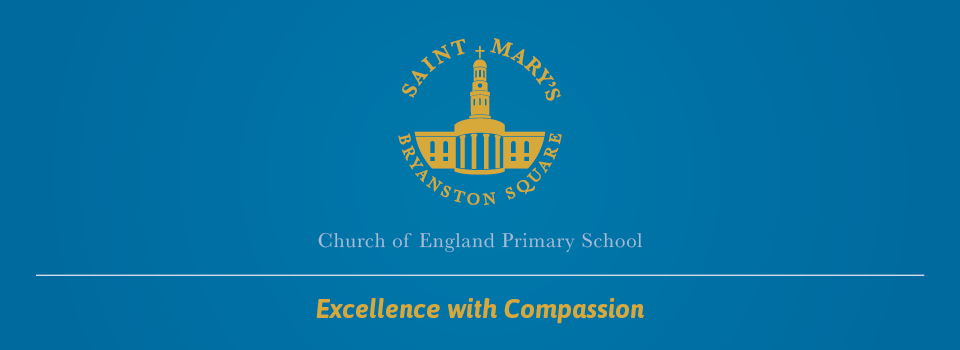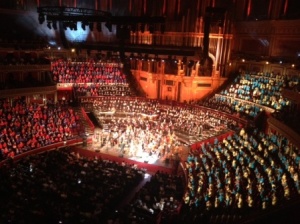Our approach
Music is a universal language that embodies one of the highest forms of creativity. At St Mary’s we aim to engage and inspire pupils to develop a love of music and their talent as musicians, and so increase their self-confidence, creativity and sense of achievement.
Music is an everyday, several times a day activity in school and a natural part of school life, enhancing the well-being of the whole community.
The children (and adults) sing every day, either in a school assembly, or in class, which develops their musicality and provides well-being benefits too. Every class has a weekly music session taught by the classteacher, where children learn about the different elements of music (eg pitch, dynamics, tempo, rhythm). We follow the Music Express scheme of work for Music.
We have a school choir with around 40 members and 2 smaller vocal groups. We also have a number of rock bands who regularly perform at school events.
Here is a clip of our school choir singing at our Carol Service in December:
Small group or individual tuition is offered in vocal group, samba drumming, band, piano, violin, guitar, bass guitar, ukulele, recorder, drum kit and flute.
This year, we started the Bridge project with London Music Masters. Children in F2 (Reception) have a musicianship session every fortnight, which is followed up by staff in class, where they are learning musical notation and singing skills. Next year, they will all learn to play the violin.
We have excellent educational links with the Royal Academy of Music and Wigmore Hall, with regular workshops and visiting musicians. We also take part in Tri-Borough events, such as the acclaimed ‘Seven Seeds’ project:
St Mary’s has achieved the ‘Music Mark’ award for commitment to quality Music Education.
How can parents help?
Children are born with a natural ability to appreciate music, and early exposure to music plays a crucial role in ‘wiring’ the brain for learning. Singing songs teaches children about how language is put together. Singing together regularly helps children to build up a vocabulary of sounds and words long before they’re actually able to understand the meaning.
Listening to music helps to put children into a relaxed and receptive state for learning.
Making music together is a cheap and easy activity that can provide a wonderful bonding experience for you to share.
Rhymes, singing and chanting together isn’t just fun – it’s a great way to introduce children to new words. Research has shown that the wider a child’s vocabulary is, the better reader they’re likely to become. Use rhymes at any time - they’re a great way of keeping your child happy in the supermarket queue and a handy trick to have up your sleeve when boredom strikes!
Rhymes and songs can also help remind children of day-to-day routines or tasks like brushing your teeth or getting ready for their day. Try personalising the action rhymes you choose. So, when doing ‘Incy Wincy Spider’ - with fingers and hands moving upwards, just like the spider travelling up the spout – say your child’s name instead of ‘Incy Wincy’.You could even name the whole family. Children often find this very funny - the strangeness of it appeals to their sense of humour.
Making your own musical instruments is a brilliant way to encourage your child to get creative. Tapping, banging or shaking in time with some music will introduce them to the idea of rhythms, patterns and beat which are useful for problem solving and reasoning. Instruments don’t have to be complicated or expensive – if you can shake it, bang it, rattle it and make a noise, it’s an instrument! Letting your child make a noise with an instrument encourages self-expression, and gives them a way to communicate how they’re feeling. Try placing a collection of simple instruments with different sounds in front of them – they’ll tend to be more creative if they’re given choice and freedom to play.
Children love the opportunity to make lots of noise, and it’s a good way to develop not only their listening as well as their language skills. Try making loud, quiet, slow and fast sounds, for example by tapping a pen on the table, or banging a wooden spoon on a saucepan. Stop after making each different sound and encourage your child to copy you.
At every stage, make sure you praise and encourage your child’s efforts – appreciating their creative endeavours (however noisy they are!) will build their confidence and self-esteem.
Look on the Tri-borough Music Hub website which offers opportunities for children and young people to play, sing, and enjoy music together!
St Mary’s Music Curriculum



